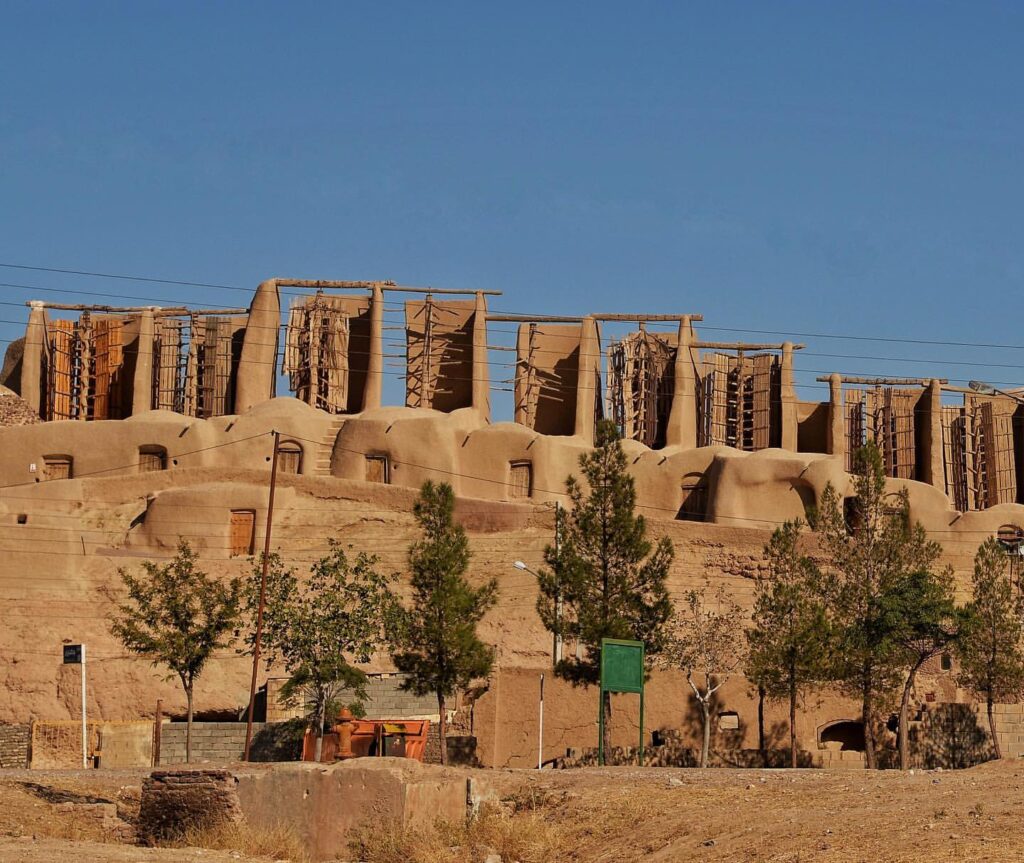1. Introduction to the Nashtifan Windmills
Situated in the arid landscape of Nashtifan, Iran, the ancient vertical-axis windmills have stood resilient for over a thousand years. Far from being mere historical relics, these windmills remain functional today, grinding grains and serving the daily needs of the local community. They are a lasting symbol of sustainability and timeless ingenuity from the Persian civilization.

2. Architecture and Natural Materials
The Nashtifan windmills are crafted from natural materials like wood and reeds, showcasing a masterful use of local resources. Their vertical-axis design is both simple and highly efficient, allowing them to capture wind from any direction. This makes them particularly well-suited to the harsh climate of Nashtifan, where strong and unpredictable winds prevail.
- Vertical-axis design: Unlike the horizontal-axis windmills commonly seen in Europe, these windmills do not need to adjust their position to face the wind. This reduces wear and tear and makes maintenance easier.
- Sustainable materials: Wood and reeds are not only abundant but also renewable, reflecting an ancient mindset of environmental stewardship.

3. Role of Windmills in Ancient Life
During an era when fossil fuels were nonexistent, these windmills played an essential role in the economic and cultural lives of the people. Their primary uses included:
- Grinding grains: Converting wheat and other grains into flour for bread and other staple foods.
- Reducing manual labor: Harnessing wind power saved significant human effort, freeing time for other activities.
- Adapting to natural conditions: In a water-scarce region like Nashtifan, utilizing wind rather than water was a clever and sustainable solution.

4. Technological and Sustainability Significance
The Nashtifan windmills are more than just tools; they are icons of sustainable innovation. They demonstrate:
- Deep environmental understanding: Ancient Persian engineers effectively harnessed renewable energy from nature.
- Technical ingenuity: The windmills’ design represents forward-thinking technology that was eco-friendly long before modern sustainability movements.
- Lessons for the modern world: Amid climate change and energy crises, these windmills serve as a powerful example of sustainable practices worth emulating.
5. Importance of Preserving the Heritage
The fact that these windmills remain operational after more than 1,000 years attests to their durable design and quality craftsmanship. However, they require careful preservation for several reasons:
- Historical value: These windmills are an invaluable part of human heritage, showcasing ancient engineering and cultural practices.
- Source of inspiration: The story of the Nashtifan windmills can inspire future generations to pursue sustainable innovation.
- Threats from modernization: Industrial development and neglect of historical sites could lead to the loss of these rare ancient marvels.

6. Conclusion
The vertical-axis windmills of Nashtifan are not just tools of labor but also symbols of creativity, adaptability, and sustainable thinking from over a millennium ago. They remind us of humanity’s harmonious relationship with nature and the potential of renewable energy.
Preserving these windmills is not merely about safeguarding the legacy of a civilization but also about protecting valuable lessons for the future. They serve as a timeless reminder of the balance between human innovation and the natural world—a balance that modern society must strive to reclaim.
